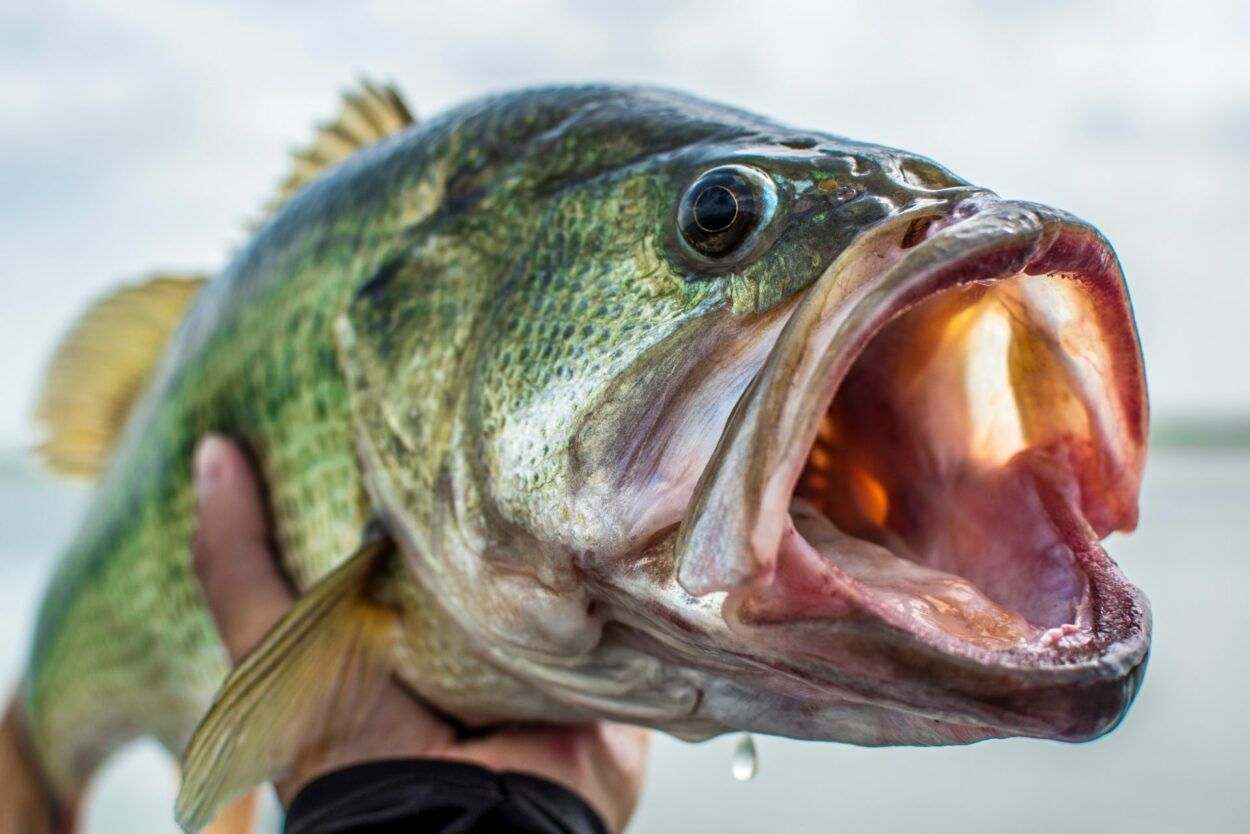Topwater Fishing: Early morning and evening; cast to open pockets in vegetation, along weed edges, over submerged grass; walk-the-dog retrieve with stick baits; pop-and-pause with poppers; steady retrieve with buzzbaits; pause after initial splash to trigger strikes; explosive surface hits
Texas Rig/Flipping/Pitching: Target heavy cover (lily pads, fallen trees, docks, thick vegetation); use 1/4-1 oz weights based on cover density; flip or pitch to specific targets; let fall on slack line watching for line movement; set hook hard; power fish out of cover; black/blue, green pumpkin colors
Wacky Rig: Weightless stick bait (Senko-style) hooked through middle; cast to docks, weed edges, open water; let fall on slack line; twitch occasionally; extremely effective finesse technique; natural colors
Crankbait Fishing: Cast and retrieve over submerged vegetation, along drop-offs, rocky points; use deflection technique (bouncing off cover); vary retrieve speed; stop-and-go retrieve; match diving depth to target zone; shad patterns most productive
Spinnerbait Fishing: Versatile search bait covering water quickly; retrieve over submerged vegetation, along weed lines, around structure; vary retrieve speed from slow-roll to fast burn; blade flash attracts bass; white/chartreuse in stained water, natural in clear
Frog Fishing: Cast over lily pads, vegetation mats, slop; walk frog across cover; pause at openings; set hook after feeling weight (don’t set on splash); use heavy braid for pulling fish from cover; summer and fall prime periods
Drop Shot: Finesse technique for clear water or pressured fish; nose-hook soft plastic 12-18 inches above weight; subtle shaking action; effective on deep weed edges, rock piles; natural colors; excellent post-frontal technique
Carolina Rig: Deep water technique for offshore structure; drag slowly across bottom; 2-4 foot leader; creature baits or worms; feel for bites through clicking weight; let fish run before setting hook
Swimbaits: Cast and retrieve with steady swimming action; work weed edges, open water over submerged vegetation; vary retrieve depth; paddle tail creates realistic swimming motion; effective for larger bass
Jig Fishing: Versatile year-round technique; hop along bottom in cover; swim through vegetation; drag slowly across structure; pair with chunk or craw trailer; feel for subtle bites; set hook immediately

